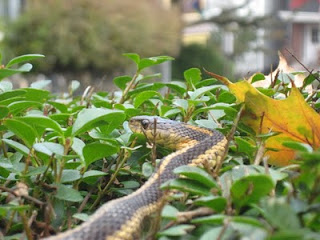Even five may seem like a lot, but not when you compare the New England numbers with reports of Devil-sex from European witchcraft trials. As Godbeer points out in his article "Witchcraft and Sex in Early Modern Culture", the Europe witches' sabbath allegedly consisted of eating, drinking and orgiastic sex. Satan presided, and took part in all of the action.
By contrast, in New England the supposed witch gatherings were relatively sedate. Satan appeared dressed like a Puritan minister, waved around a book, and talked about his demonic plans. The witches just stood around and listened. Basically, it was a demonic parody of the Puritan's congregational style of worship.
Why the big difference? According to Godbeer, in Europe the authorities were concerned about regulating sex. They forced confessions from accused witches that addressed their concerns. In contrast, the accused in New England used their confessions to mock the church that was torturing them.
So, who were the five witches who took a walk on the wild side?
- Mary Johnson of Wethersfield confessed to "Uncleanness with Men and Devils" in 1648.
- Rebecca Greensmith of Hartford, "owned that the devill had frequent use of her body" in 1663.
- A neighbor accused New Haven's Elizabeth Goodman of having Hobbamocke as her husband. Hobbamocke (aka Hobbomock) was a local Native American god the Puritans equated with the Devil. To the Indians, he was the deity who presided over shamanism, death, darkness and the night.
- In the Salem trials, it was said of Sarah Parker that the "devil had come to her and kissed her."
- Sarah Bishop claimed the "Devill Did Come bodyly unto her and that she was familiar with the Devill..."
You can find Richard Godbeer's complete article in the Dublin Seminar's Wonders of the Invisible World, 1600-1900.


